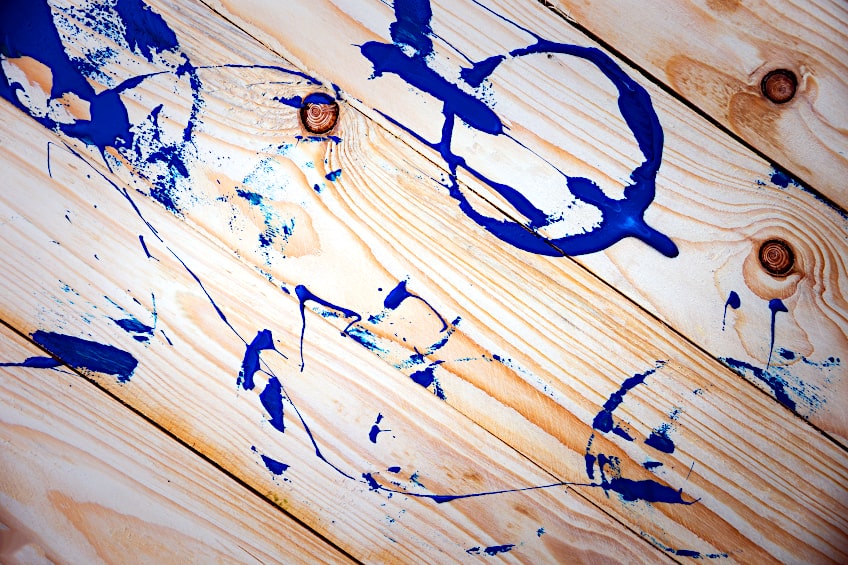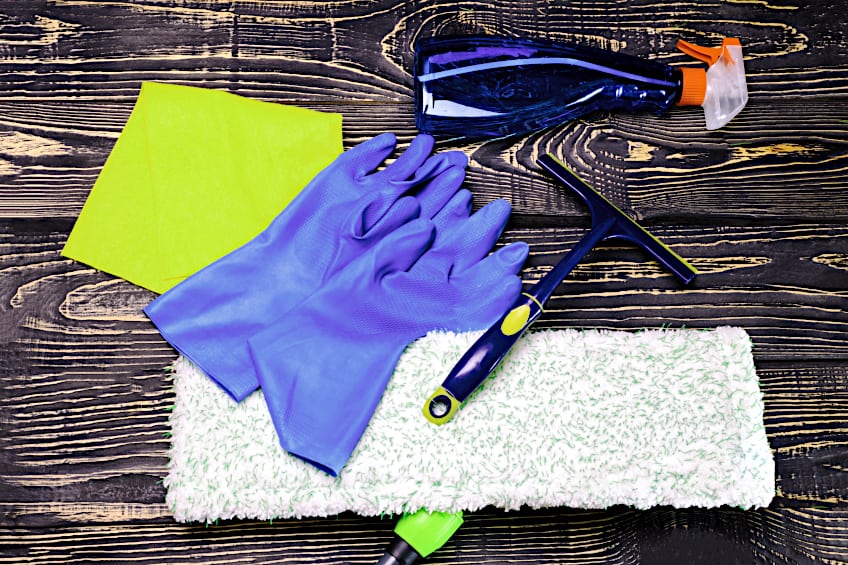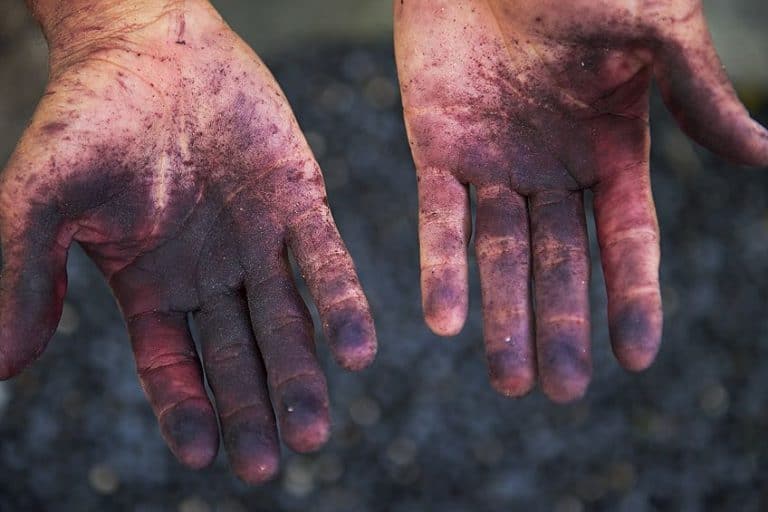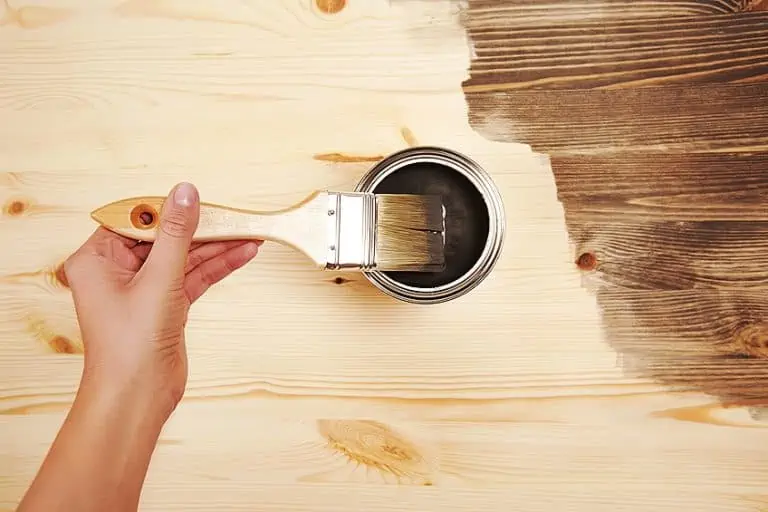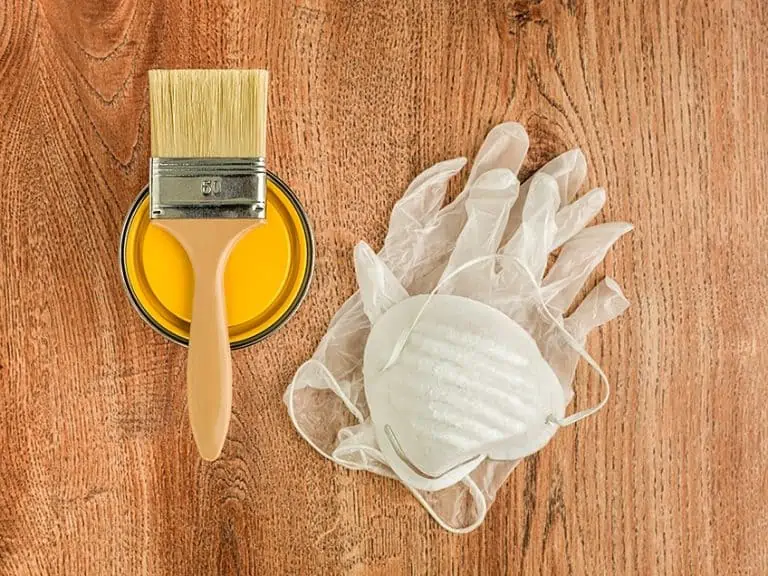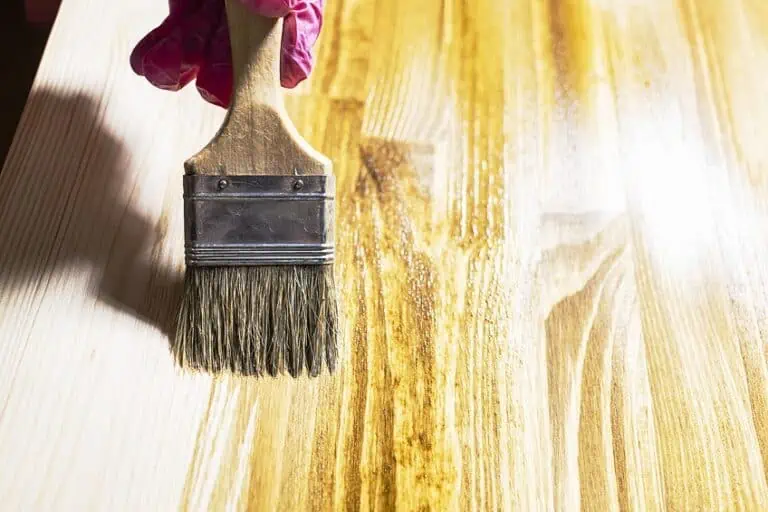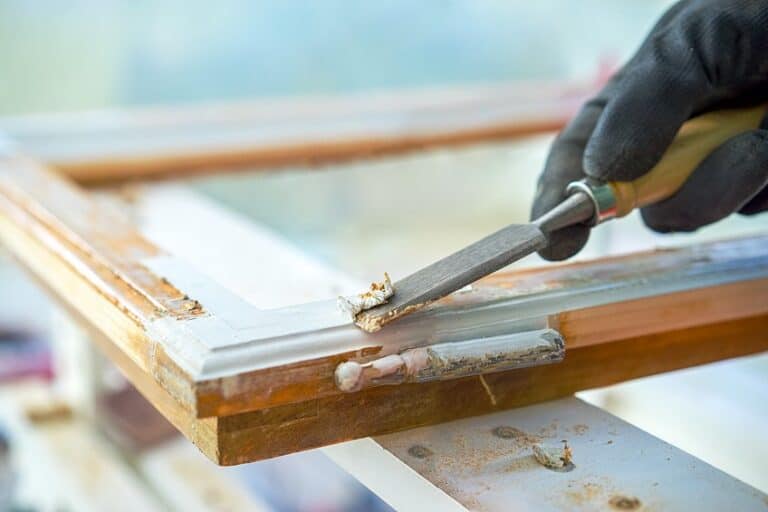How to Remove Acrylic Paint From Wood – Easy Paint Spill Clean-Up
Whether you’ve been doing some DIY painting jobs around the house, or you’re a professional artist, or your kids have been doing some school projects – no matter what form your painting takes, we are all concerned with accidental paint spills or splatters, especially on wooden surfaces like a table, desk, or furniture. Acrylic paint dries very fast, and if you fail to remove it while it is still wet, it becomes more difficult. However, there are various methods for how to get acrylic paint off wood, but it will take a little effort.
What Is Acrylic Paint?
Why is it a problem when you spill acrylic paint on wood? Once acrylic paint dries, it becomes very durable, forming a solid hard surface which makes it more difficult to remove. Water-based acrylic paint for woodwork is made up of three main components and includes a pigment, binder, and vehicle.
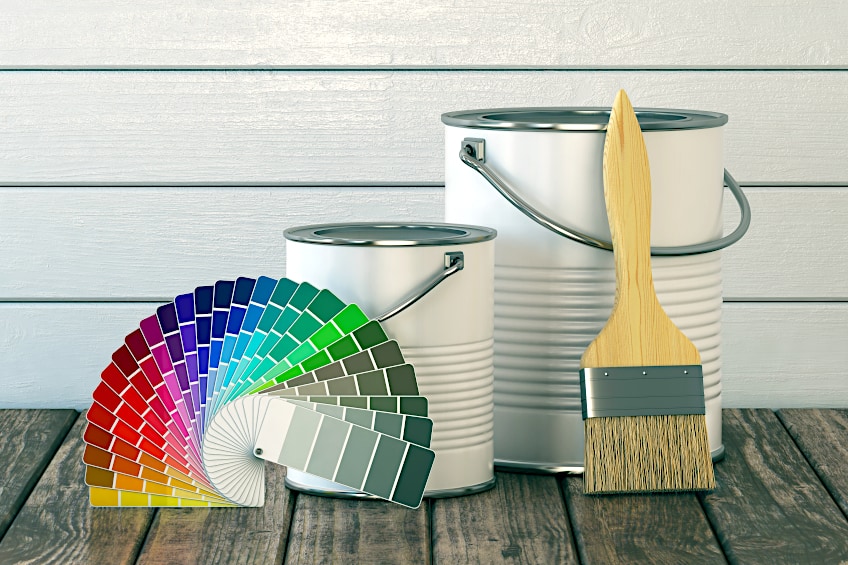
Pigment
When it comes to acrylic paint for woodwork, the pigment is formed from granular solids that give your paint its color. These are crushed or broken up, forming tiny particle sizes which do not dissolve but stay suspended in the paint. These pigments or granular particles can be inorganic, organic, synthetic, or natural, and have no similarity to the surface that they are applied to.
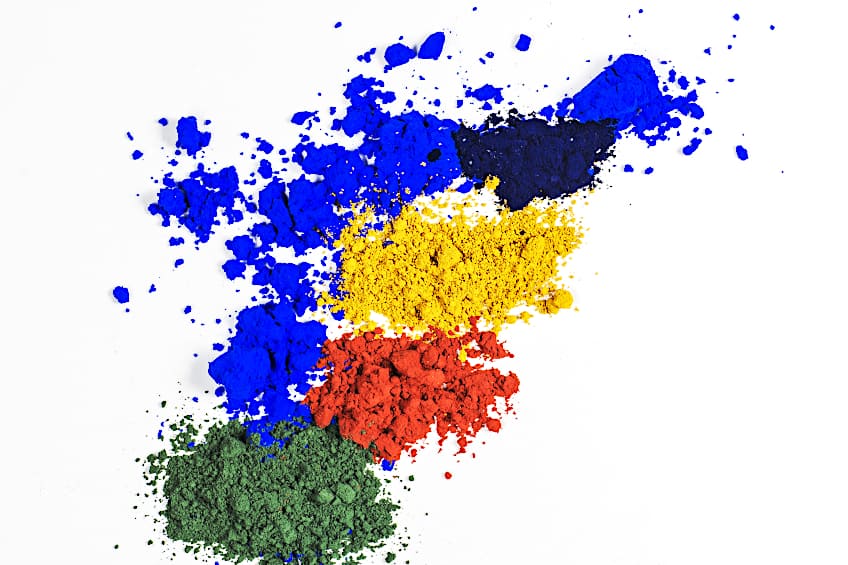
Binder
The binder material or ingredient helps to hold the pigment on the surface after the paint has dried properly. The binder for acrylic paint is an acrylic polymer that forms a film or layer over the surface of the paint after all the water has evaporated.

Vehicle
The vehicle transports the binder and the pigment. The vehicle for acrylic paint is water, which combines with the binder and forms a polymer emulsion. After all the water has been absorbed or evaporated the paint dries, which then creates a durable, hard clear polymer film that traps all the colored pigment particles on the surface of your item.
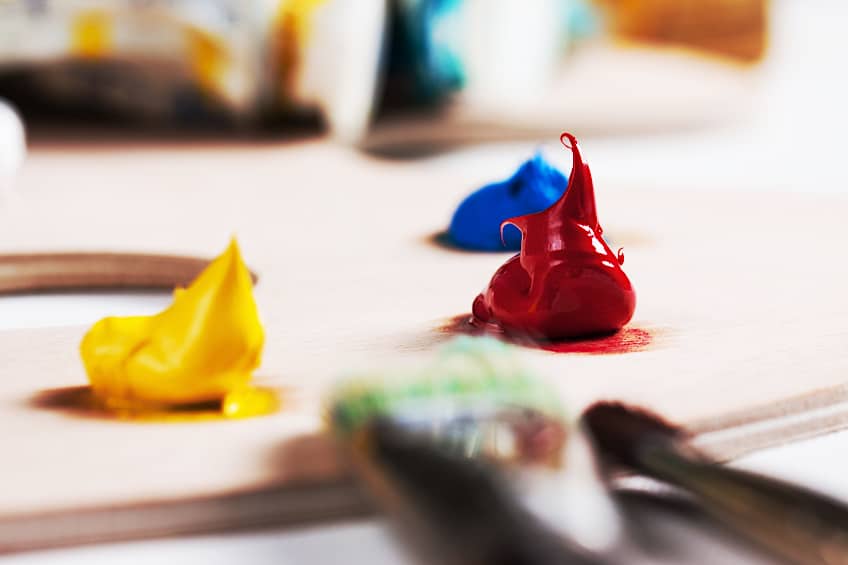
These three main components we have just mentioned above, are not the only ingredients in acrylic paint for woodwork. Since the pigments float on top of the water, some acrylic dispersant is added to give the paint a more consistent mixture. Other additives are also included to make the paint more effective.
- Buffers: These are added to help keep the pH level more stable, which assists with the durability of the paint.
- Initiators: These are added to start the polymerization process, which forms a polymer film throughout the whole drying process.
- Surfactants and Defoamers: Additives that are added to assist in the drying process.
- Preservatives: Once added, these assist in preventing any microorganisms from growing.
- Thickeners and Stabilizers: To help thicken the paint to the desired thickness and can also add some texture to your art piece.
Factors Involved in Removing Acrylic Paint From Wood
Once the water evaporates or is absorbed and the acrylic paint has dried, the polymer molecules form an acrylic paint film, which is no longer water-soluble. This means that you need to remove the acrylic paint before it dries, or else you will have to use a substance that can dissolve the acrylic resin.
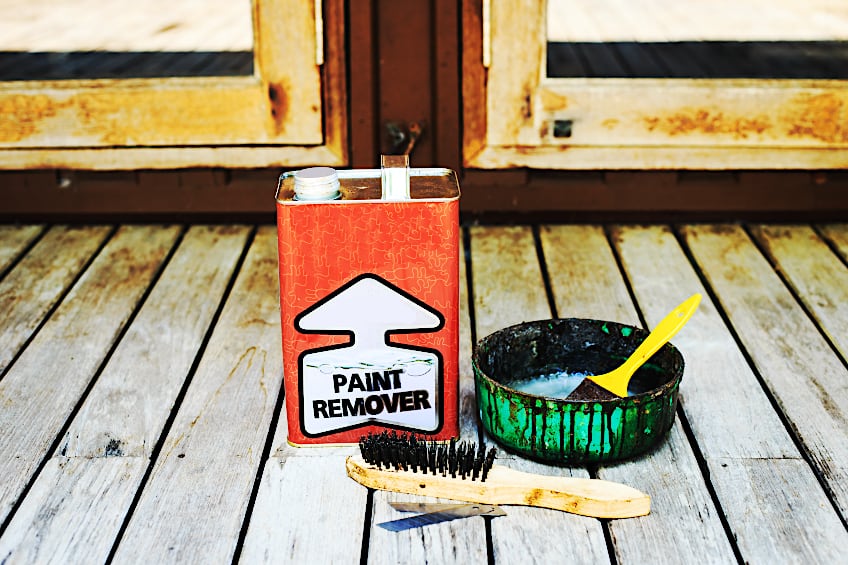
It is not always that easy to remove the paint spill before the paint dries, as nine out of ten times you only become aware of the spill far too late. Unfortunately, water alone cannot remove dried acrylic paint. Fortunately, it is not too difficult to remove acrylic paint from wood as most of the options are cheap and accessible and there is no need to use power tools that might damage the wood surface. Let us consider the different types of acrylic paint stains or spills.
Removing Wet Acrylic Paint From Wood
As soon as the paint is applied to the wood surface, it is wet and remains wet for a few minutes. Any stains or spills need to be removed while the paint is still in this state. This can be completed by wiping the surface with a clean rag, some warm water, and mild detergent. Simply wipe the stain off your wood surface. However, after 20 minutes, the acrylic paint has dried, and the method of warm water will not be effective.
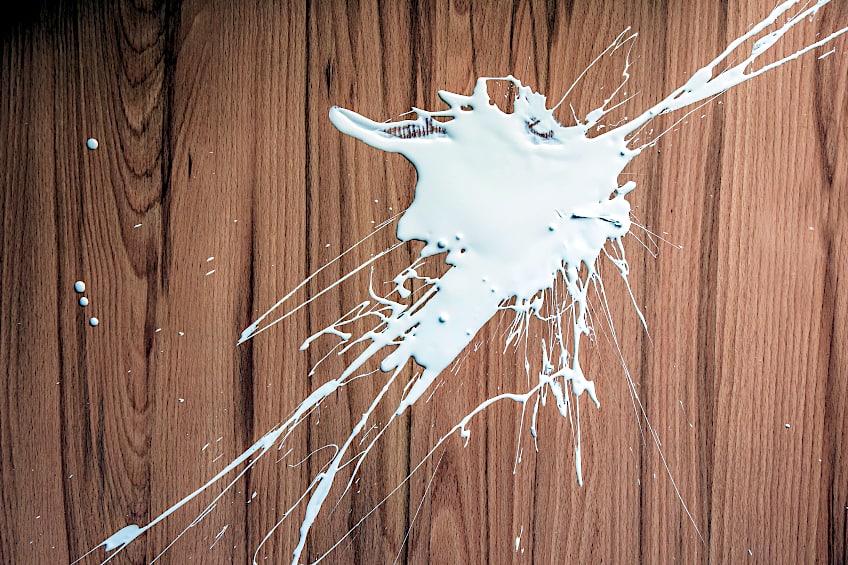
How to Remove Dried Acrylic Paint From Wood
After 20 minutes the acrylic paint has dried and trying to remove the spill then is a lot more difficult. You can try the soap and water method and maybe you are still in time, and it will work, but if not, then there are numerous other methods you can use to remove the dry acrylic paint stain or spill.
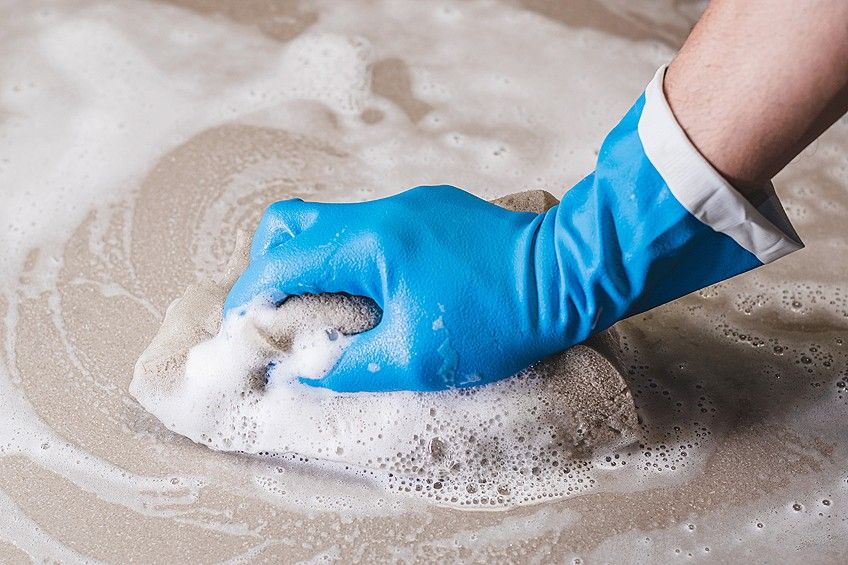
Safety Measures to Consider
Before you start, remember that safety is of utmost importance, and you need to apply all the safety measures to avoid damaging the wood surface when removing the acrylic paint stain or spill. Safety measures you need to comply with.
- Whatever method you are using to remove the acrylic paint stain, make sure it is kept far from any children or animals.
- Ensure you work in a well-ventilated area by keeping the windows open and ensuring a fresh cross-flow of air is available.
- Whatever method you are using to remove the acrylic paint stain, start by first testing a small section of the wood to see what happens.
- Be careful to choose a method that will suit the type of wood you are working with.
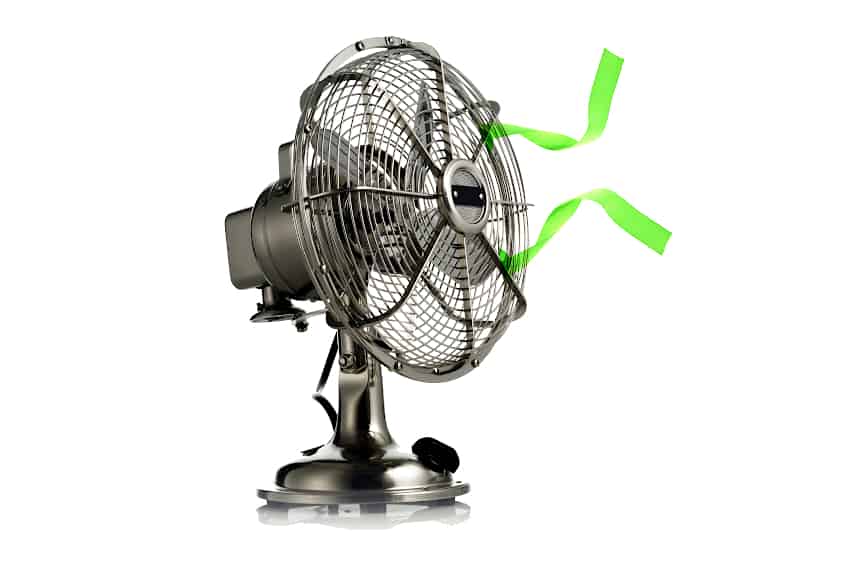
How to Remove Acrylic Paint From Wood
Removing acrylic paint from your wood surface is not as difficult as you think, but the major concern people have is damaging the wood surface. Most of the methods that work well use common household materials that we all have in our kitchen or bathroom. So, let us now consider what method will work for you in your situation.
Using Soap and Water
This is the easiest and cheapest of all the methods available and it takes very little time, but you need to remove the acrylic paint spill from your wood surface while it is still wet. After it dries this method will not be effective. If it is a small mess, it is also a good way to get acrylic paint off hardwood floors. Materials required for this method include some of the following.
- Soap
- Water
- Clean Cloths
- Gloves
- Scraper
Remove Excess Acrylic Paint
The best method for removing the excess acrylic paint is a putty knife or plastic scraper, or if you do not own a plastic scraper, then a bank or library card will work just as well. By using the corner of the scraper, knife, or card scrape off the excess acrylic paint. You should do this while the paint remains wet.
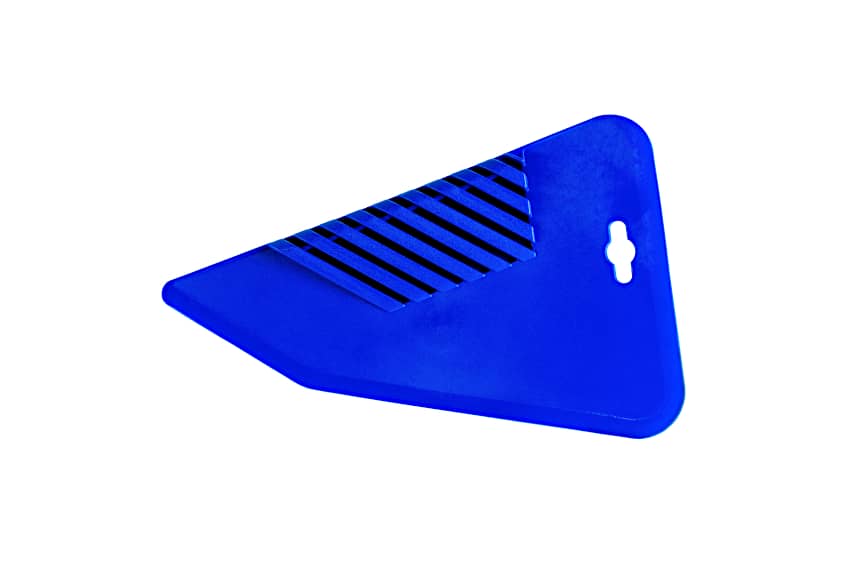
Wiping the Acrylic Paint Off
Take a clean cloth and wet it in some water, then rub the paint stain with the cloth, applying a fair amount of pressure and rubbing it back and forth. As soon as you see the cloth becoming saturated, change it for a fresh cloth. Wet a fresh cloth with some hot water and apply some liquid or bar soap. Glycerin soap is best, but any soap will work as long as it produces a good lather. Gently use the cloth to scrub the remaining acrylic paint off the surface of the wood, making sure that all traces of paint have been removed from the wood.
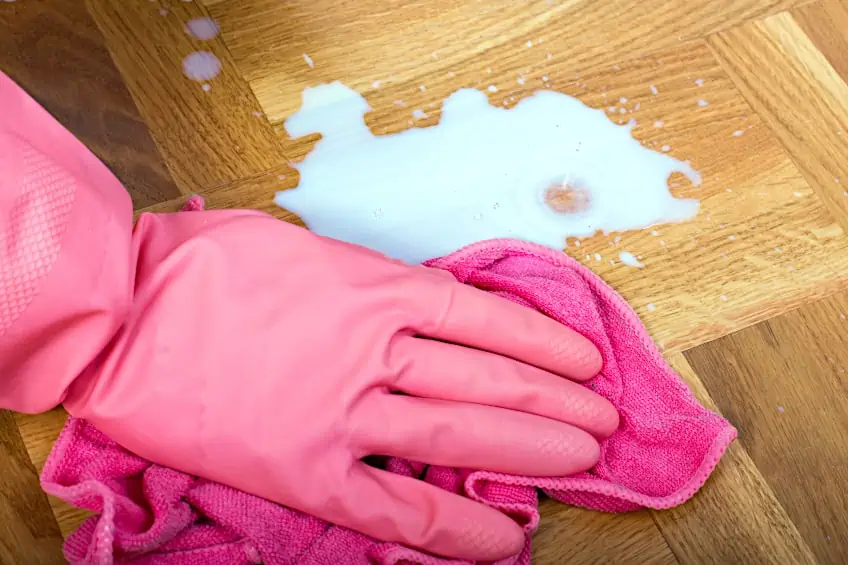
This can be done by scrubbing in a straight line with the grain of the wood, and if necessary, adding more soap and using new clean cloths. Make sure there is no paint left in the grooves of the wood grain. Next, take a clean cloth and wipe it over the whole surface of the wood until all traces of soap and paint have been removed.
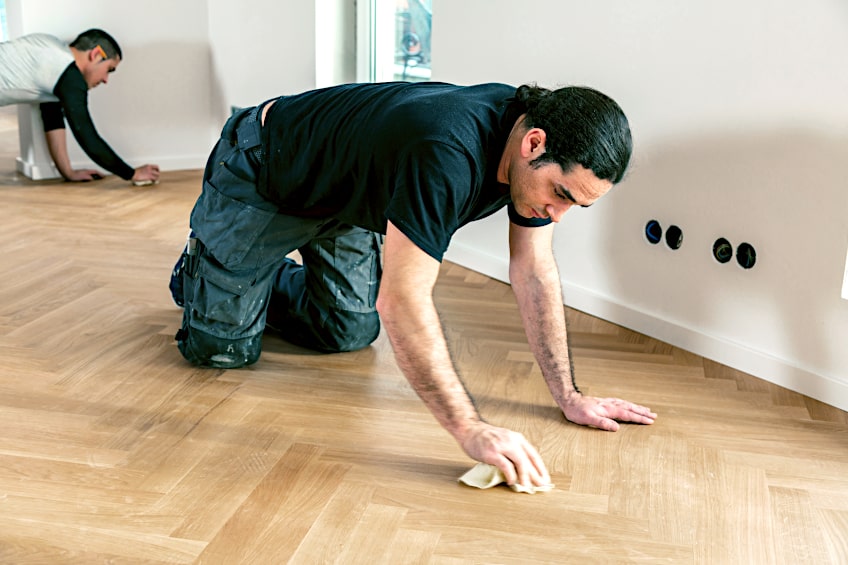
Once the wood has been scrubbed, allow it to dry, which can take about two days depending on how large the wood surface is. Then you will have successfully removed wet acrylic paint from your wood surface using soap and water.
Using Vegetable Oil
If the method of using soap and water is not effective, then using vegetable oil will do the trick as it can be used effectively, even if the acrylic paint has dried already. It is also a great method to use as it is natural. Collect the following items when using vegetable oil.
- Paper towel
- Vegetable oil
- Clean Cloths
- Gloves
- Scraper or putty knife
Soften the Paint
Pour some of the vegetable oil onto a clean cloth and then rub it into the paint stain, making sure it covers the entire stain. You can also apply the oil directly onto the paint stain and use a paper towel to rub it into the paint stain, ensuring you cover the entire spot.
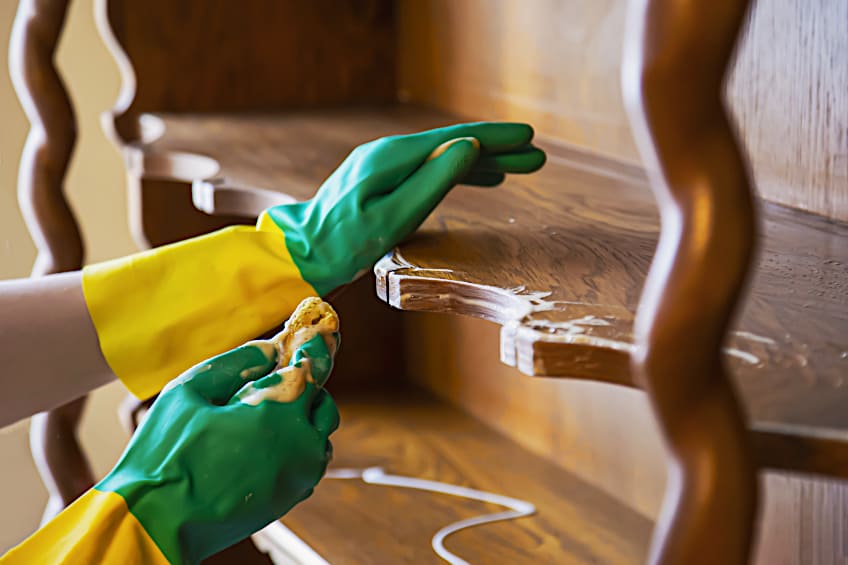
Allow the Oil to Sit
Leave the oil on the paint stain to soften the paint and do not touch the spot for at least 30 minutes to one hour. You will notice the paint begin to bubble as it softens, this is the oil getting deep into the paint on the wood.

Scrape the Paint Off
Once the paint has softened properly, you can take the scraper and scrape the paint off the wood surface. During this process, try not to cause any damage to the wood, and if the paint remains hard, you can repeat the steps above. Make use of a damp cloth and clean any traces of paint or oil from the wood surface.
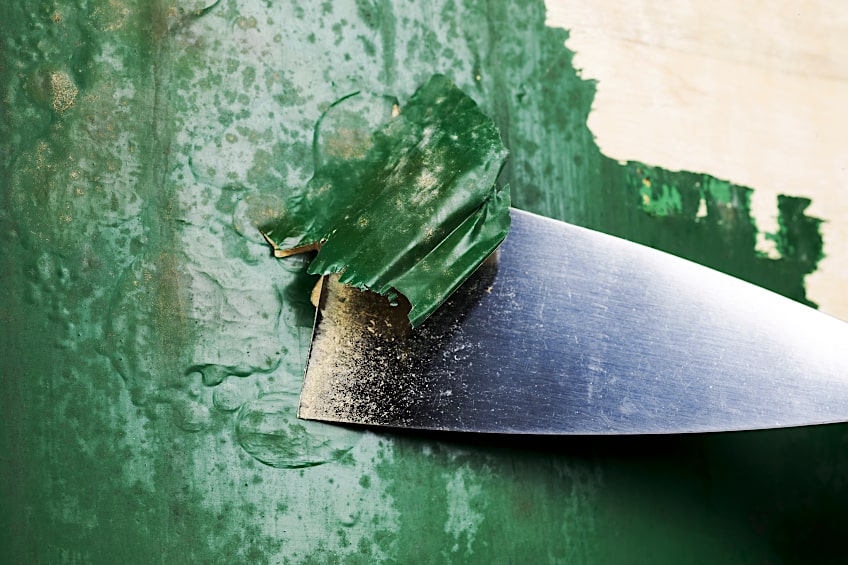
Using Rubbing Alcohol or Acetone
Rubbing alcohol or acetone are great products to use for removing acrylic paint from your wood surface. Acetone is commonly found in many nail polish removers but will do a great job in removing acrylic paint from your wood. This method is best used on dry acrylic paint and unvarnished or bare wood surfaces. This is also a great way to get acrylic paint off hardwood floors. However, if used on a varnished surface, it could dull the shine. Materials you need for the job include the following.
- Rubbing alcohol or acetone
- Clean Cloths
- Gloves
- Goggles
- Mask
- Scraper or putty knife
- Steel wool
Scrape the Top Layer of Paint Off
Take your scraper or putty knife and try to remove as many layers of the acrylic paint as you can, carefully, without damaging the wood surface by leaving fine scratch marks behind. Some steel wool can also be utilized. To make this step easier, use the vegetable oil method first, which softens the paint, making it a lot easier to remove the paint.
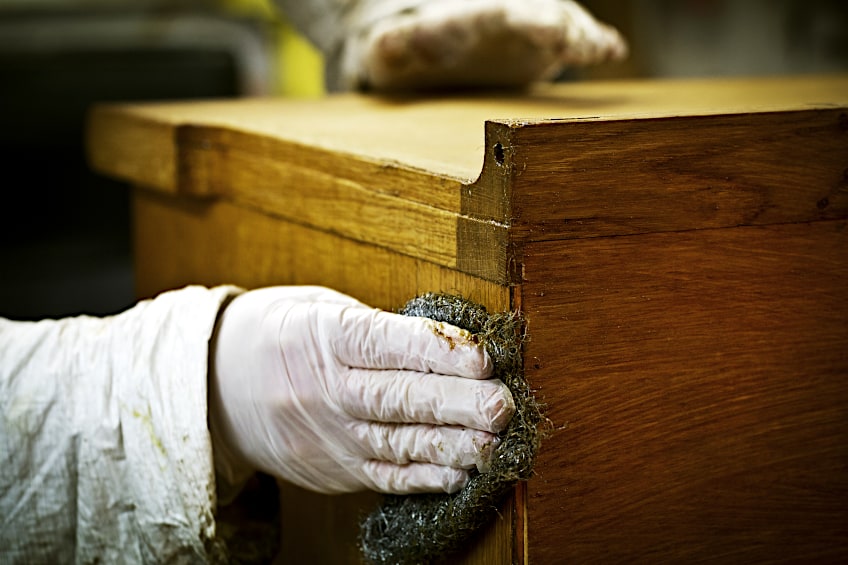
Rub the Acrylic Paint Off
Pour some of the rubbing alcohol or acetone onto a clean cloth; now start rubbing the paint stain until you can separate it from the wood surface. Keep on adding more alcohol until the paint stain is soft enough, but be careful, as the alcohol can damage your wood surface. You can follow this process at least three times if necessary. Take the scraper or putty knife and scrape off all the soft paint from the wood surface
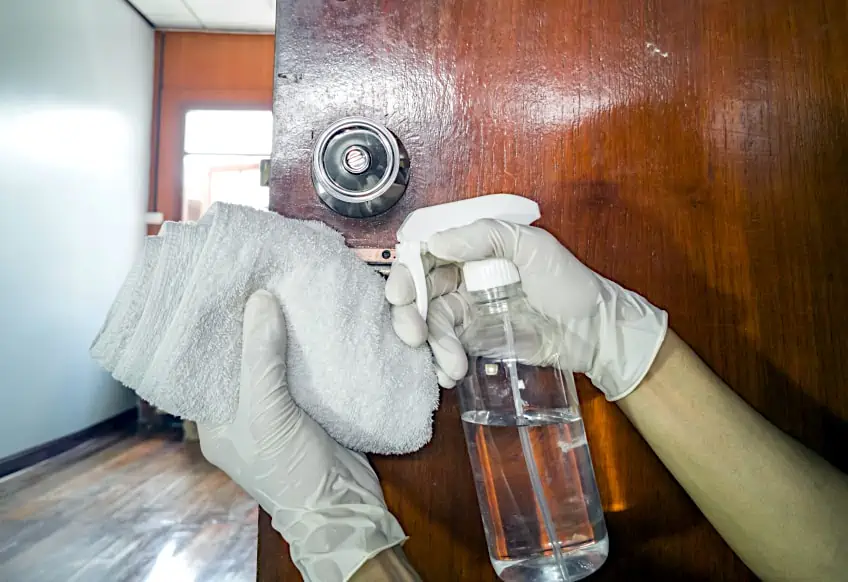
Wipe the Residue Off
Make use of a clean cloth and dampen it with a little warm water and use it together with some soap. Wipe off all the alcohol and paint residue from the wood surface, and using a clean dry cloth, wipe the whole wood surface clean and leave it for about 24 hours to dry properly.
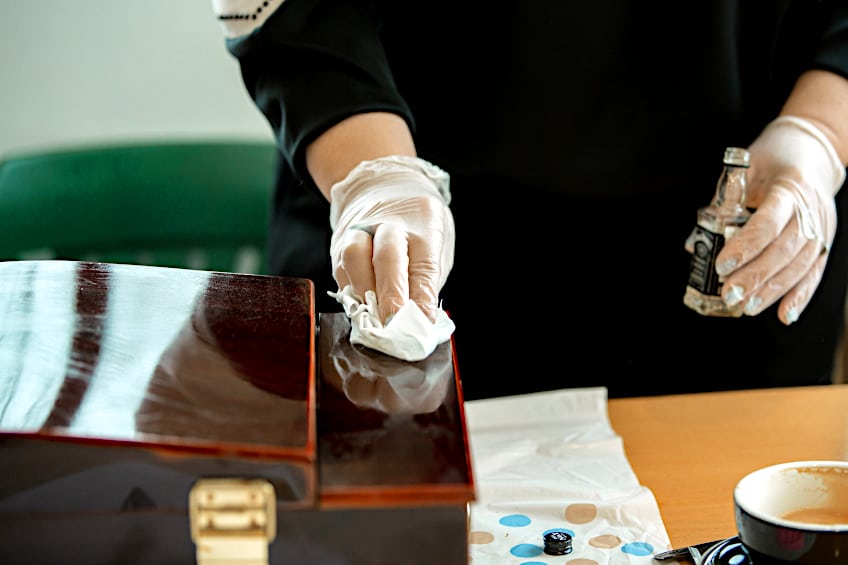
Safety Precautions
When using rubbing alcohol or acetone for removing acrylic paint from wood, there are certain precautions you need to be aware of and you need to put into practice. Some of these precautions are listed below.
- Rubbing alcohol is combustible and you should keep away from any open flames.
- Always wear your protective equipment when working with rubbing alcohol like gloves, goggles, and mask.
- Make sure you work with these materials in a location that has proper airflow.
- You should make sure that rubbing alcohol is kept safe so children and animals cannot come into contact with it.
- When coming into contact with your skin, it can cause swelling and redness, so avoid contact with your skin.
- Never mix rubbing alcohol and acetone as the result can be dangerous, use only one or the other.
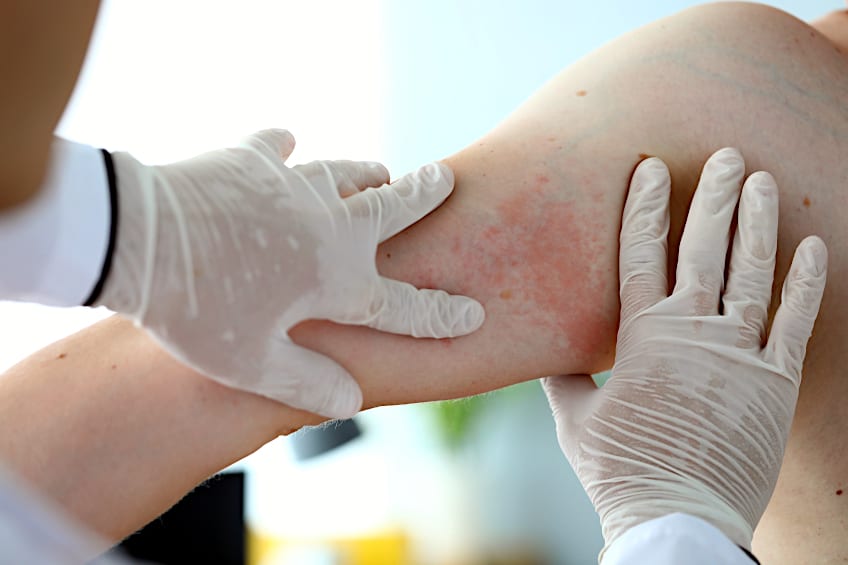
Using a Solvent
Using a solvent to remove acrylic paint from wood is the most successful and fastest method, but it is also unsafe to use. The chemicals pose serious environmental and health problems, as the solvents are toxic. This method is best used where you have thick layers of paint on unfinished or unpainted wood, and you are not concerned about the finish of your wood. You will require the following when using a solvent.
- Paint solvent
- Clean Cloths
- Gloves
- Goggles
- Mask or respirator
- Scraper or putty knife
- Mineral spirits
- Paintbrush or paint roller
Choose Your Solvent
Paint solvents are very effective in removing acrylic paint from wood and can be done in a short time. You can choose chemicals like methylene chloride, or you can go for thinners, paint strippers, or ammonia. However, the best and most commonly used is methylene chloride. This solvent is more environmentally friendly than the other solvents, but it is still an extremely dangerous chemical and should be used with caution. When using this solvent, all safety precautions and safety equipment should be used.
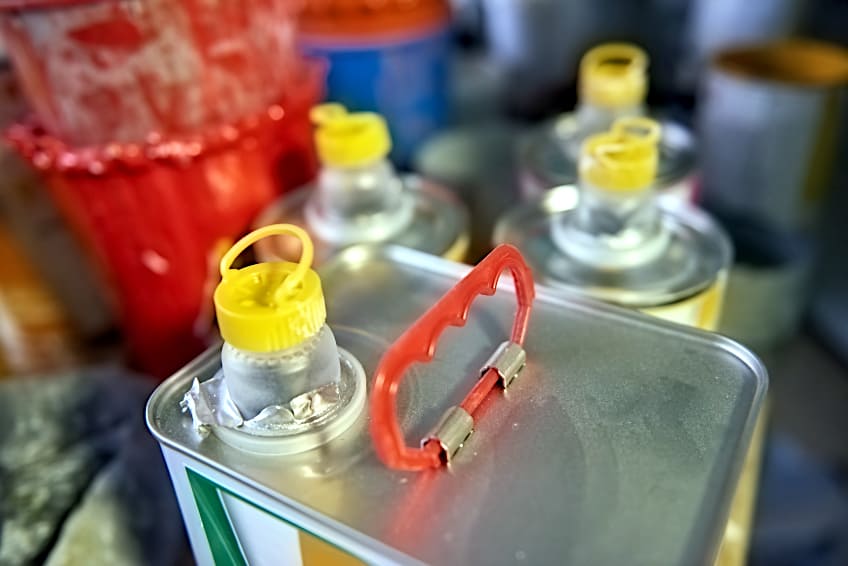
Put on Safety Gear
The fumes are very toxic and dangerous, and you need to put on the necessary safety gear for your protection. Wear your goggles to protect your eyes, use gloves, and put on a mask. You can also wear a long-sleeved shirt to protect your arms, and ensure you work in a well-ventilated area.
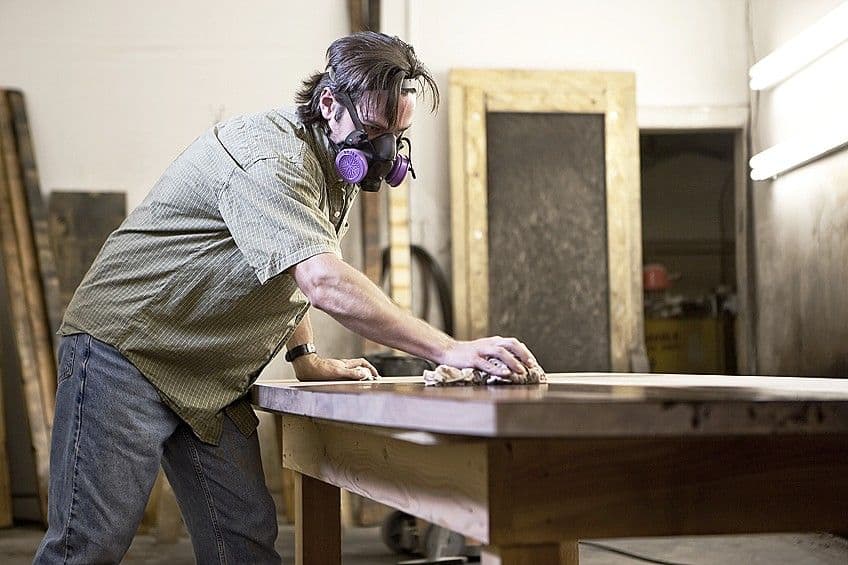
Apply the Solvent
Use your paintbrush or paint roller to apply a thin layer of the solvent over the paint stain, but do not pour the solvent directly onto the wood surface as this can be very dangerous for you and others. Now, wait for about 20 to 30 minutes until you see the paint starting to bubble, which shows that the solvent is working.
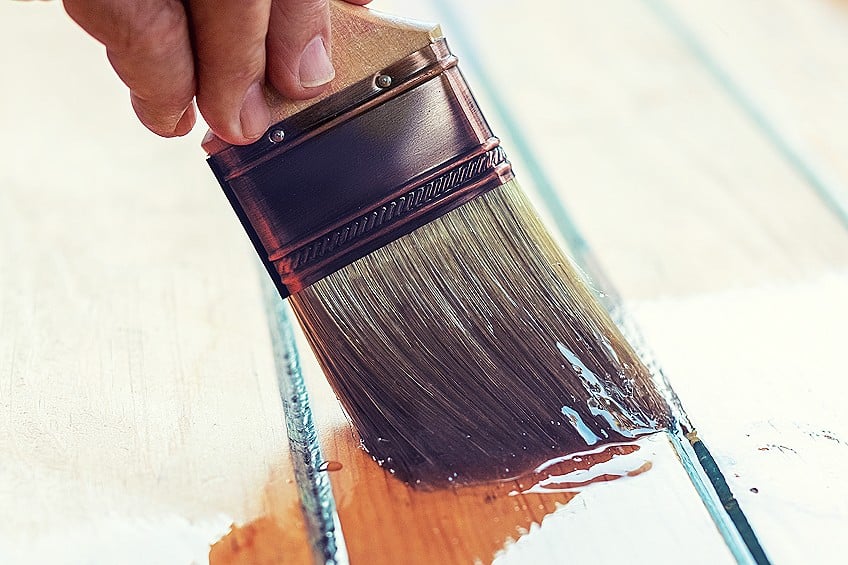
Remove the Paint
Take your scraper or putty knife and scrape off the soft paint from the wood. Always scrape in the direction of the wood grain and try not to push down too hard as this can damage the wood surface. Ensure you remove as much if not all of the old acrylic paint.
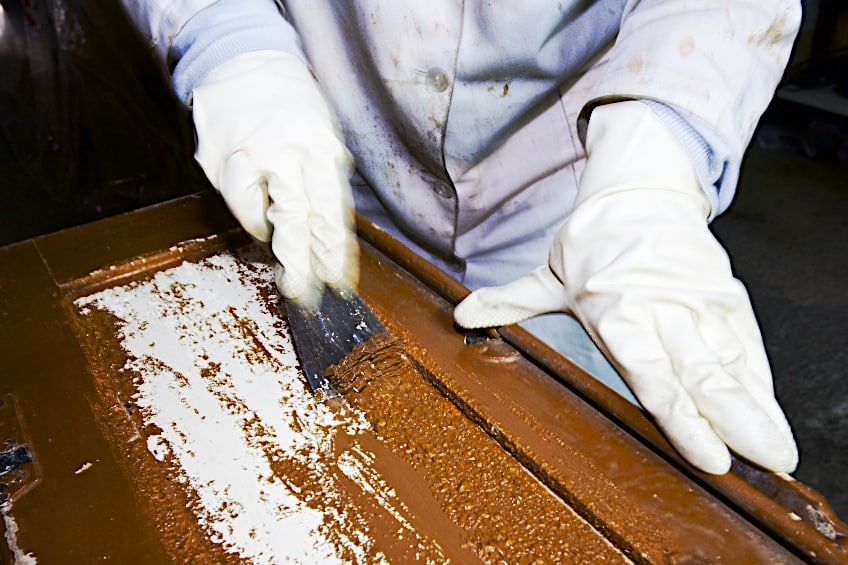
Cleaning Up
Take a clean dry cloth and soak with some mineral spirits, then wipe the whole wood surface with the cloth, making sure you remove all the paint residue as well as the solvent. Then use another clean cloth and soak it with water and wipe the wood again, neutralizing the solvent completely. Then allow the wood surface to dry for around one week before you apply some wax to seal the wood surface.
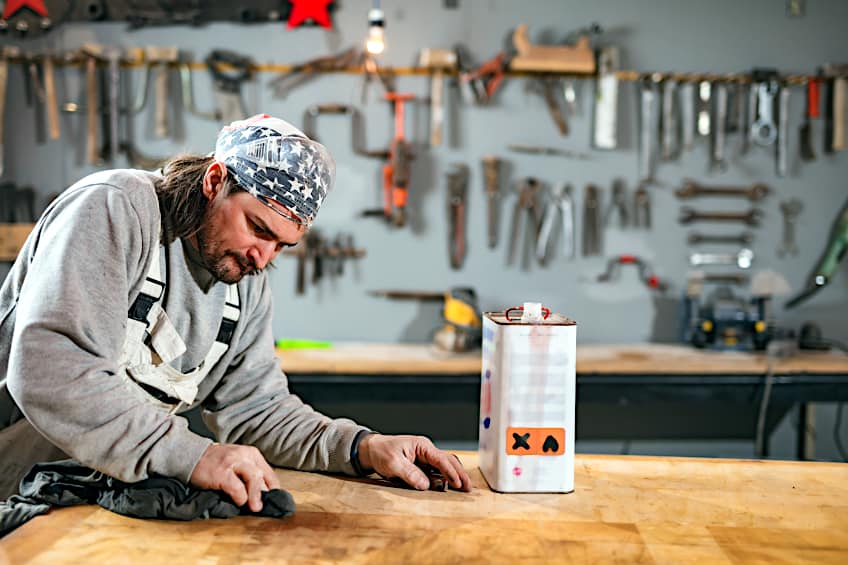
Using a Heat Gun
For this method, you first need to establish if the area where the paint is on is large enough for the use of a heat gun. This is because a heat gun is only effective in removing acrylic paint from large wood surface areas like a complete door or furniture. The use of a heat gun involves exposing the paint-stained area to very high temperatures of over one thousand degrees Fahrenheit, which will result in the paint bubbling and peeling off in a matter of seconds. A heat gun is fairly cheap and is readily available. Below is a list of items needed when using a heat gun.
- Heat gun
- Heatproof Gloves
- Goggles
- Mask or respirator
- Scraper or putty knife
- Clean cloths
Take all the Necessary Precautionary Measures
The very first thing you need to do is read the heat guns instructions and follow them carefully. Then you put on all the safety equipment that you need, for example, heatproof gloves, safety goggles, mask, or respirator, and ensure the area where you are working is well ventilated.
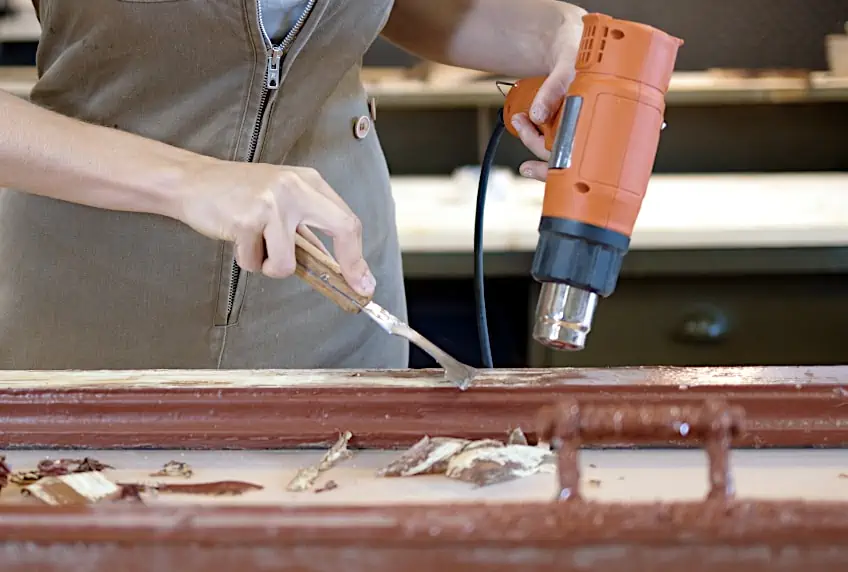
Heat the Paint
Take a clean cloth and remove any debris or dirt and plug the heat gun into the power source, switch it on and set it to the desired heat setting. Hold the heat gun firmly in your hand and wait a few minutes for the gun to heat up. It may be a good idea to try it on a small section of the wood first, to see how it works. Aim the gun at your paint stain and hold it about three to four inches away from the surface of the wood, and start moving the gun in a circular motion. Make sure you do not exceed more than 10 to 20 seconds as the heat could damage your wood if applied for longer periods.
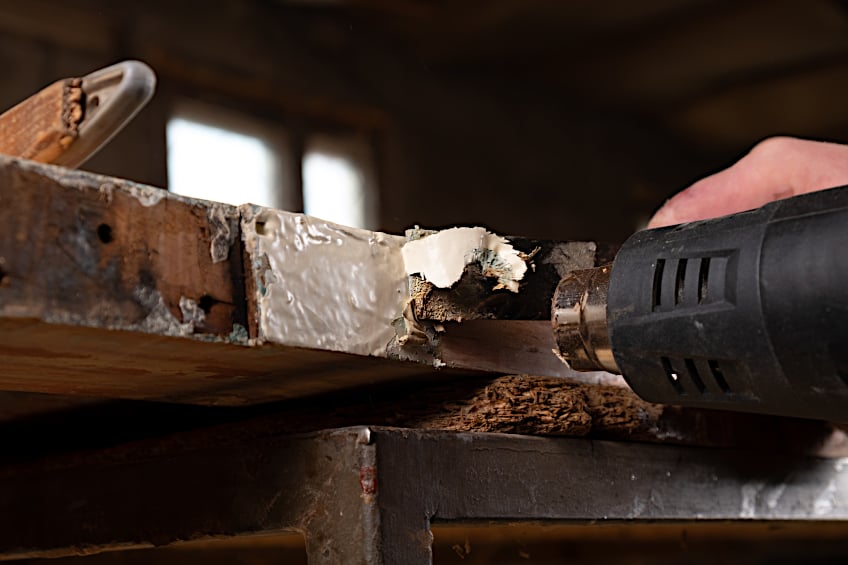
Scrape the Paint Off
Hold the heat gun in one hand and the scraper or putty knife in the other hand, and as soon as you see the paint begin to bubble, use the putty knife to flick the paint off. Try to hold the gun nozzle slightly ahead of the scraper. Do small sections at a time and clean the mess from your scraper before it builds up too much, even if you have to turn the heat gun off while cleaning your scraper. Now continue the process until all the paint has been removed from your wood surface, making sure you do it gently to avoid damaging the wood.
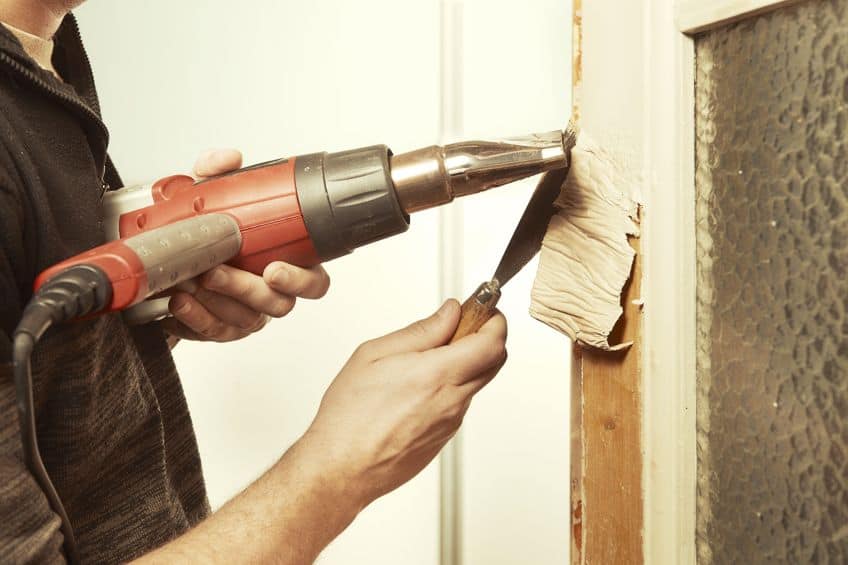
Wipe the Wood Surface Clean
Wait for the wood to cool down, then take a damp cloth and rub it back and forth until all the[ residue has been removed. You can use some soap and water for this purpose or some rubbing alcohol, and then allow the wood to dry properly.
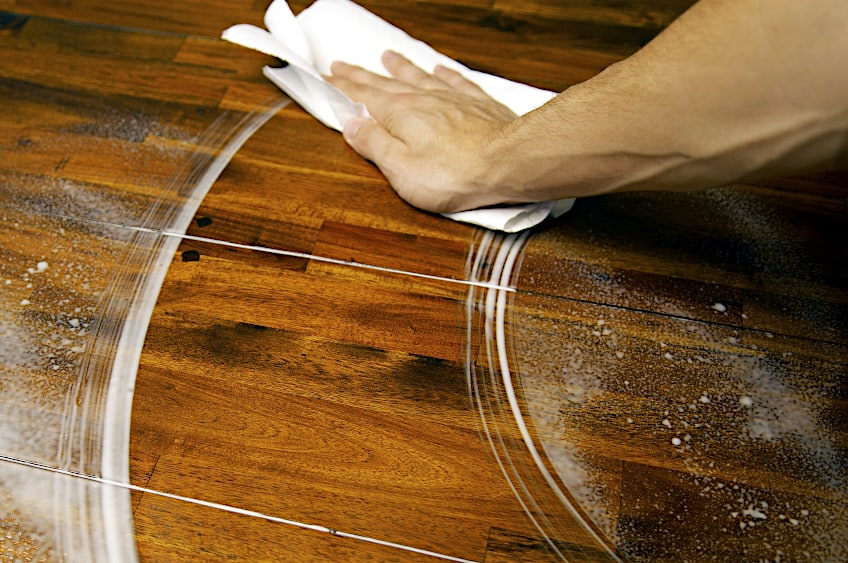
Sanding the Wood
This is an ideal method to use when learning how to get acrylic paint off wood surfaces. However, it comes with a great deal of effort on your part and may take a long time to complete. This method is best applied to wooden furniture like tables that have unfinished wood.
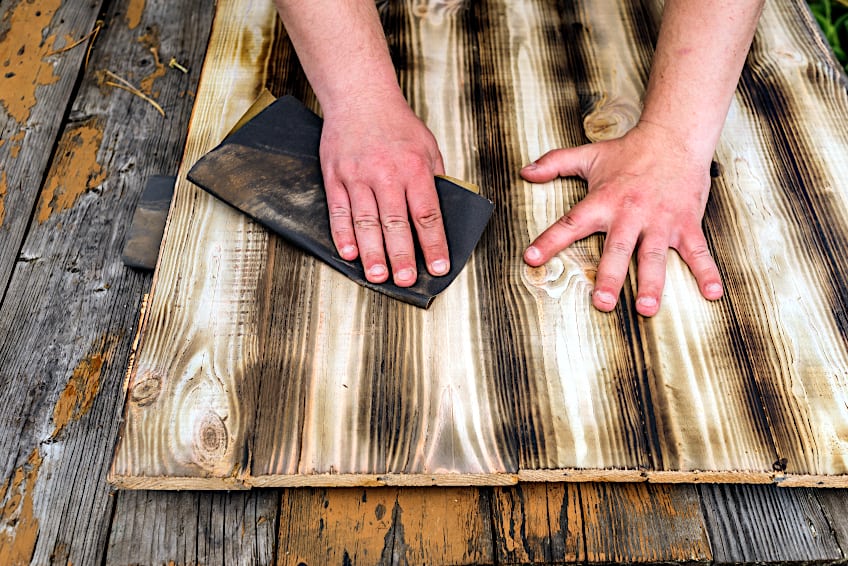
By sanding the stained area, you can remove the paint from the wood surface, leaving you a paint-free wooden surface. Depending on the size of the paint stain, you can either do it manually using sandpaper and sanding block or, to cut down on some time, you can make use of a power sanding machine. Some items that are needed for sanding the wood include the following:
- Sandpaper (80 to 150grit)
- Sanding block
- Power sander if required
- Mask or respirator
- Clean hot water
- Gloves and goggles
- Clean cloths
Sand the Wood Surface
Begin by first using a clean cloth and removing any dirt from the surface, revealing the paint stain. Make sure you put on all the necessary safety equipment like goggles, a mask, and gloves and work in an area that is well ventilated. Then, if the paint stain is small, you can use fine-grit sandpaper of about 80-grit. Wrap this around the sanding block and begin to gently sand the wood, moving in a circular motion and always sanding with the grain of the wood.
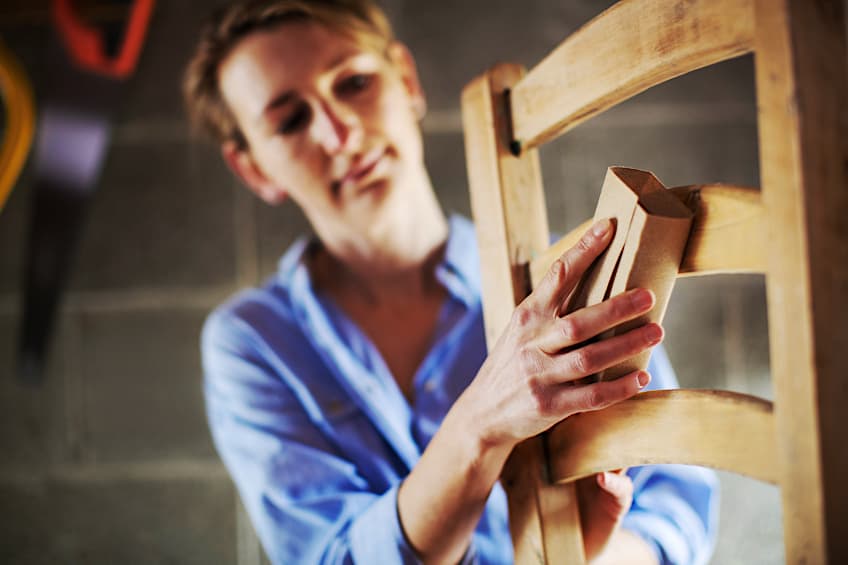
If your paint stain covers a larger area, then the best method to use is a power sanding machine. Attach an 80-grit sanding disc to the sander and begin to sand gently over the paint stain so as not to damage the wood surface in any way.
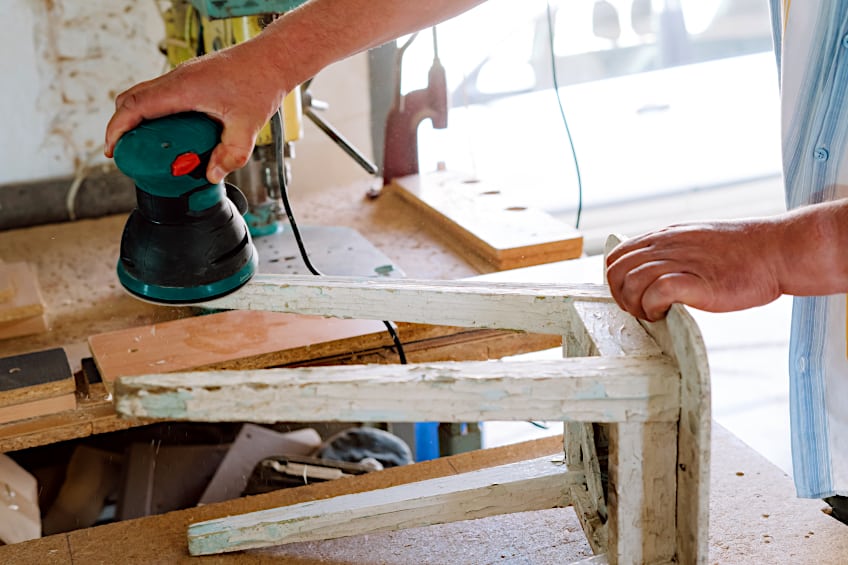
Clean the Wood Surface
Take a damp clean cloth and wipe the entire residue off the wood surface, always wiping in the direction of the wood grain. Continue to wipe until the wood surface is clean from all acrylic paint. Now the wood surface is ready for a wood stain or some other refinishing substance.
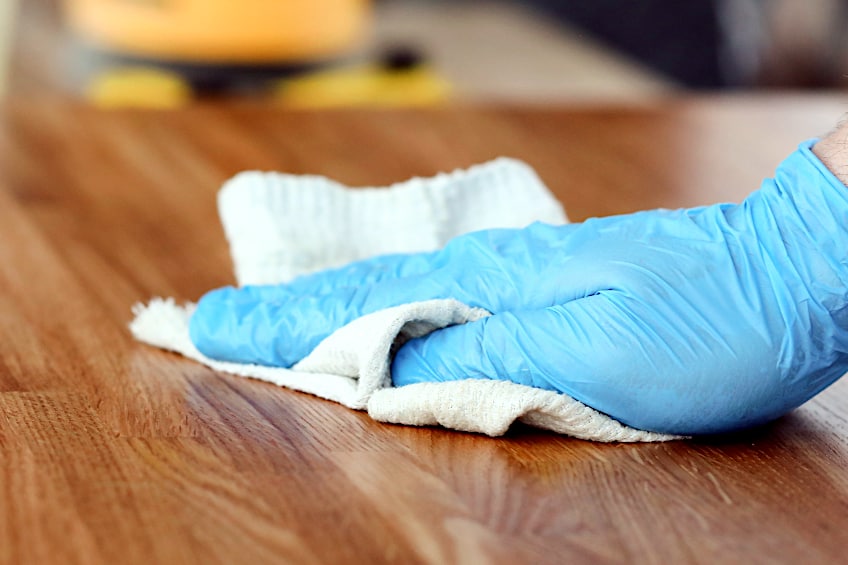
Some Tips to Help You Remove Acrylic Paint From Wood
Removing acrylic paint from wood can be fairly easy or more challenging, as seen from the methods above. However, some tips might help make the cleaning process easier and also more enjoyable, so you can tackle your next paint project with ease.
- Remember to always read the instructions on the containers of whatever product you are using, as these instructions give you clear directions and safety advice on how to use the product.
- Always use the products that are recommended for use on a particular type of wood you are working with, otherwise, you can damage your wood surface.
- Under no circumstances must you mix the different cleaning materials as it could damage the wood and also cause you harm.
- Only use the cleaning materials on the paint-stained area and not on the whole surface area, as some of the materials can discolor the wood.
So, there it is, you now have all the solutions necessary for removing acrylic paint stains from wood, whether they are wet or dry, or floors, doors, decks, or your furniture. Depending on the state of the paint and the type of wood, all you need to do is choose the method that suits your situation, and the problem is solved.
Frequently Asked Questions
How to Remove Dried Acrylic Paint From Wood Using Vinegar?
You can remove dried acrylic paint from wood by heating some vinegar in the microwave oven or on the stove, and then apply it to the paint stain using a brush or cloth. Leave this for about 20 minutes, then scrape the softened paint off.
Can You Use Thinners to Get Acrylic Paint off Wood?
Acrylic paint is made using plastic polymers, so lacquer thinners will be able to remove the acrylic paint stain from the wood surface. This method can only be used on dried acrylic paint but be careful to use all the necessary safety measures when doing so.
How to Get Acrylic Paint off Hardwood Floors?
Try to scrape it off as much as you can using a scraper or putty knife, then soak a clean cloth in some rubbing alcohol and rub the rest of the paint stain off.
What Removes Acrylic Paint?
If the acrylic paint is still wet, then ordinary soap and water will be able to remove it. However, if it has already dried, then you need to use the following materials: rubbing alcohol or acetone, vegetable oil, or solvents like methylene chloride, lacquer thinners, paint stripper, or ammonia. You can also use a heat gun or sand the wood surface.

I have been into woodworking since 2005 and woodturning since 2011. Because of my love for wood and woodworking, I started woodhappen.com to teach other enthusiasts about how to finish and seal wood, the best woodworking tools, the different types of wood, and everything else related to woodworking! Read more about me here.

